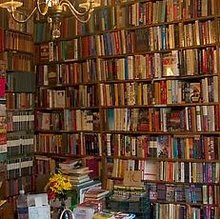Monday, July 03, 2006
How does Donna Leon do it? She has become the Tintoretto of the crime novel, using the vision of Venice imprinted on our minds and hearts as her canvas to create a world of crime, family, history and inevitable governmental weakness and corruption.
In this her 14th novel (three of which have never been printed in America), the basically pragmatic but occasionally optimistic Commissario Guido Brunetti is called to the scene on a cold night just before Christmas after a Senegalese street vendor, one of a band of African immigrants who sell knockoffs of expensive handbags to tourists, has been shot five times by two professional killers. The head cop is quickly forced to examine his own mixed feelings about the illegal immigrants, then try to understand why his own teenage daughter seems so contemptuous of them – even in the face of her professor mother’s indignation over her attitude.
A laborious investigation by one of the Commissario’s colleagues who scored some points when he dived into a canal to rescue another Senegalese turns up the murdered man’s shabby sleeping place – and also a cache of uncut diamonds. Almost immediately, Brunetti’s superiors transfer the case to higher governmental agencies.
But Guido, who loves Venice for its heady mixture of history, beauty and the stains of past public and private crimes on the walls of its museums and churches, refuses to give it up without a struggle. Helped by the resourceful Signorina Elettra, one of whose jobs is to deflect the worst antics of their mutual boss, he comes up with evidence linking the murder to the war in Angola and a powerful Italian corporation.
So we get to go along as the Commissario does his dredging in the city of canals. We also get to share, vicariously, the marvelous food of the Brunetti household – including a “pasticcio made of layers of polenta, ragu, and parmigiano. To follow,” Leon apologizes, “there was only roasted radicchio smothered in stracchino.”


